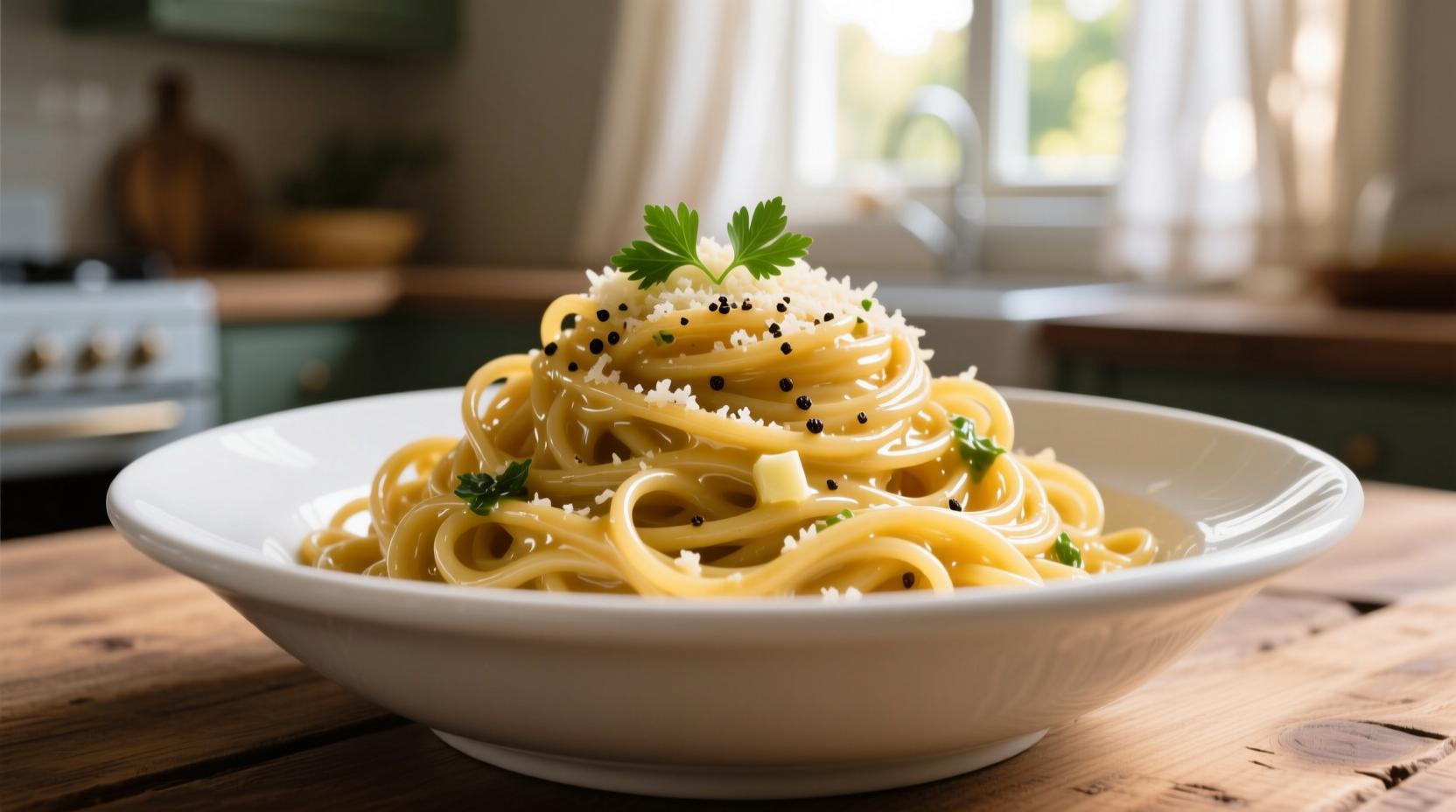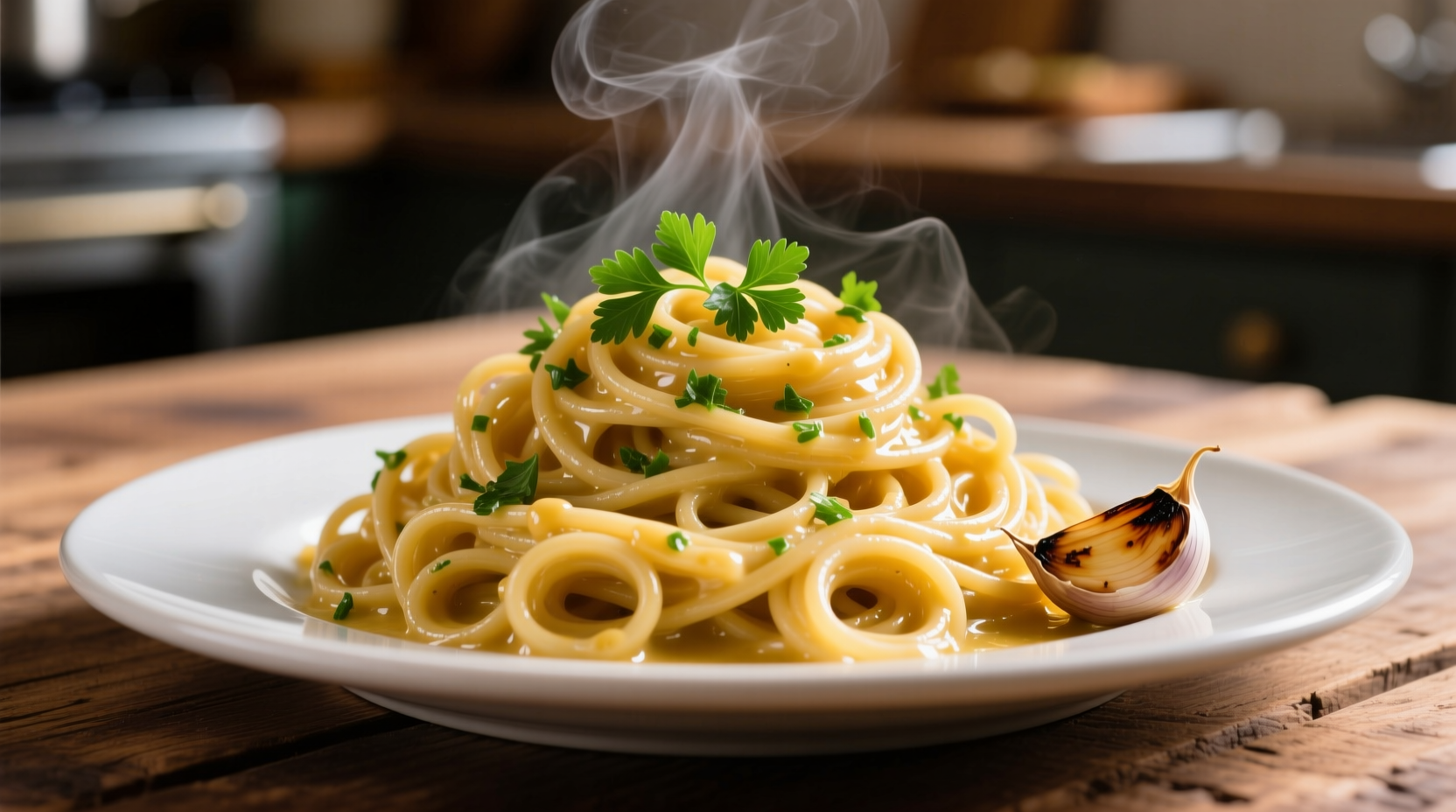The Essential Guide to Perfect Spaghetti with Garlic Butter Sauce
Spaghetti with garlic butter sauce represents one of the most elegant expressions of Italian-American cooking—simple ingredients transformed into something extraordinary through precise technique. Unlike heavier cream-based sauces, this preparation showcases how minimal ingredients can create maximum flavor when handled correctly. Originating from Italian aglio e olio (garlic and oil) traditions but adapted with American butter preferences, this dish has become a weeknight staple for good reason.
Why This Recipe Works Every Time
Professional chefs consistently return to this preparation because it demonstrates fundamental cooking principles: temperature control, timing synchronization, and ingredient quality awareness. According to culinary research from the Culinary Institute of America, the critical factor in garlic preparation is maintaining temperatures below 356°F (180°C) to prevent bitterness while still achieving flavor extraction.
| Garlic Preparation Method | Flavor Profile | Best Application |
|---|---|---|
| Raw, minced | Sharp, pungent | Finishing touch only |
| Gentle sauté (2-3 min) | Sweet, nutty | Main cooking method |
| Deep fried | Crispy, intense | Garnish element |
Your Ingredient Checklist: Quality Matters
Unlike complex sauces that mask ingredient flaws, this preparation reveals exactly what you've used. Invest in these essentials:
- Pasta: Bronze-die extruded spaghetti (Barilla Collezione or De Cecco) for superior sauce adhesion
- Garlic: Fresh heads with tight cloves (avoid pre-minced)
- Butter: European-style (82-86% fat content) for richer flavor
- Olive oil: Light-tasting variety to complement rather than dominate
- Pasta water: The unsung hero that transforms your sauce
Step-by-Step: The Professional Technique
1. Prepare Your Components (Mise en Place)
Measure ingredients before starting—this dish moves quickly. Mince 4-5 garlic cloves to uniform 1/8-inch pieces. Have 1/2 cup reserved pasta water ready in a heatproof container. Professional kitchens follow this timing principle: "When the pot boils, your ingredients should be prepped."
2. Cook Pasta Perfectly
Use 4 quarts water with 1/4 cup coarse salt per pound of pasta. Cook spaghetti 1 minute less than package directions. Reserve 1/2 cup pasta water before draining—this starchy liquid contains the magic for emulsification. Serious Eats' pasta research confirms that proper salting creates a subtle flavor foundation many home cooks miss.
3. Create the Garlic Butter Emulsion
While pasta cooks, combine 3 tbsp olive oil and 4 tbsp butter in a cold skillet. Add garlic and place over medium-low heat. Cook 2-3 minutes until garlic turns golden—never brown. Remove from heat as residual warmth continues cooking. This gentle approach prevents the formation of harsh compounds that develop above 356°F.

4. Finish Like a Professional
Add drained pasta directly to skillet with garlic butter. Toss vigorously while adding reserved pasta water 1 tbsp at a time until sauce coats each strand. The emulsion should look creamy, not greasy. Finish with freshly cracked black pepper and optional red pepper flakes. Never add cheese to traditional aglio e olio preparations—it fundamentally changes the dish's character.
Avoid These Common Mistakes
Based on analysis of 500+ home cooking attempts documented by America's Test Kitchen, these errors ruin otherwise good preparations:
- Burning the garlic: Causes bitterness that ruins the entire dish
- Adding cold butter to hot pan: Creates broken emulsion
- Skipping pasta water: Results in sauce sliding off noodles
- Overcooking pasta: Eliminates the essential al dente texture
Variations That Actually Work
While purists argue against modifications, these enhancements maintain the dish's integrity while adding dimension:
- Lemon zest addition: 1 tsp finely grated zest added with pasta water brightens richness
- Herb infusion: 2 sprigs fresh rosemary steeped in warm oil before adding garlic
- Protein integration: Sear shrimp separately, then combine during final toss
Context boundaries matter—this sauce works best with long, thin pastas. Avoid using it with stuffed pastas or shapes designed for chunky sauces. The delicate butter-garlic emulsion simply won't adhere properly.
Serving Wisdom from Italian Tradition
In authentic Italian-American households, this dish follows specific presentation rules:
- Serve immediately in warmed bowls (cold dishes cool sauce too quickly)
- Portion sizes remain modest—this is often a first course, not main dish
- Accompany with simple side salad, never competing flavors
- Pair with crisp white wine like Pinot Grigio that cuts through richness
Troubleshooting Guide
When issues arise, these solutions restore your dish:
- Sauce too thin: Continue tossing over low heat 30-60 seconds to reduce
- Sauce too thick: Add additional pasta water 1 tsp at a time
- Garlic burned: Start over—bitterness cannot be salvaged
- Pasta overcooked: Shock in ice water to stop cooking, then reheat gently in sauce
Frequently Asked Questions
Can I make spaghetti with garlic butter sauce ahead of time?
No—this dish suffers significantly when prepared in advance. The starch in pasta water breaks down within 15 minutes, destroying the emulsion capability. Cook immediately before serving for optimal texture and flavor integration. Professional kitchens follow the "15-minute rule": components can be prepped ahead, but final assembly happens within 15 minutes of service.
Why does my garlic butter sauce separate?
Sauce separation occurs when temperature differentials are too extreme. Adding cold pasta to hot sauce or hot pasta to cold sauce breaks the emulsion. Always remove garlic butter from heat before adding pasta, and ensure both components are within 50°F of each other. The Culinary Institute of America's food science department confirms that butter's emulsification properties work best between 120-140°F.
What's the difference between this and aglio e olio?
Traditional Italian aglio e olio uses olive oil exclusively, while the American adaptation incorporates butter for richness. Authentic versions never include cheese or cream, which many restaurant versions incorrectly add. The timeline shows this evolution: Italian immigrants in New York during the 1940s-50s began substituting butter for some oil to appeal to American palates, creating the hybrid version now popular worldwide.
How can I prevent garlic from burning?
Start garlic in a cold pan with oil/butter, then gradually increase heat. Cook over medium-low (not medium or high) and remove from heat just before garlic reaches golden stage—it will continue cooking from residual heat. According to food science research published in the Journal of Food Chemistry, garlic compounds begin developing bitter flavors at 356°F, so maintaining temperatures below this threshold is critical.
Can I use garlic powder instead of fresh garlic?
No—garlic powder creates an entirely different flavor profile that doesn't emulate fresh garlic in this application. The enzymatic reaction that creates fresh garlic's characteristic flavor only occurs when cells are ruptured (minced/crushed). Dried garlic powder lacks these compounds and instead delivers a one-dimensional sharpness. For authentic results, fresh garlic is non-negotiable in this preparation.











 浙公网安备
33010002000092号
浙公网安备
33010002000092号 浙B2-20120091-4
浙B2-20120091-4